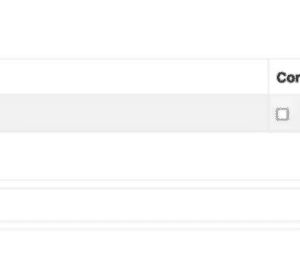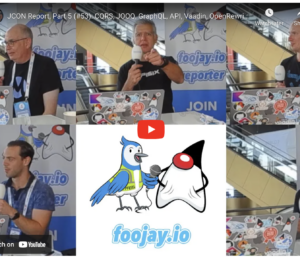Augmenting the client with Alpine.js
- October 14, 2024
- 3498 Unique Views
- 3 min read
This article is part of a series comparing different ways to implement asynchronous requests on the client, which is colloquially known as AJAX. I dedicated the previous post to Vue.js; I'll dedicate this one to Alpine.js - not to be confused with Alpine Linux.
I'll follow the same structure as previously.
Laying out the work
Here's the setup, server- and client-side.
Server-side
Here is how I integrate Thymeleaf and Alpine.js in the POM:
<dependencies>
<dependency>
<groupId>org.springframework.boot</groupId>
<artifactId>spring-boot-starter-web</artifactId> <!--1-->
</dependency>
<dependency>
<groupId>org.springframework.boot</groupId>
<artifactId>spring-boot-starter-thymeleaf</artifactId> <!--1-->
</dependency>
<dependency>
<groupId>org.webjars</groupId>
<artifactId>webjars-locator</artifactId> <!--1-->
<version>0.52</version>
</dependency>
<dependency>
<groupId>org.webjars.npm</groupId>
<artifactId>alpinejs</artifactId> <!--2-->
<version>3.14.1</version>
</dependency>
<dependency>
<groupId>org.webjars.npm</groupId>
<artifactId>axios</artifactId> <!--1-->
<version>1.7.3</version>
</dependency>
</dependencies>
- Same as last week with Vue
- Alpine instead of Vue
It's similar to Vue's setup.
Client-side
Here's the code on the HTML side:
<script th:src="@{/webjars/axios/dist/axios.js}" src="https://cdn.jsdelivr.net/npm/[email protected]/dist/axios.min.js"></script> <!--1-->
<script th:src="@{/webjars/alpinejs/dist/cdn.js}" src="https://cdn.jsdelivr.net/npm/[email protected]/dist/cdn.min.js" defer></script> <!--2-->
<script th:src="@{/alpine.js}" src="../static/alpine.js"></script> <!--3-->
<script th:inline="javascript">
/*<![CDATA[*/
window.alpineData = { <!--4-->
title: /*[[${ title }]]*/ 'A Title',
todos: /*[[${ todos }]]*/ [{ 'id': 1, 'label': 'Take out the trash', 'completed': false }]
}
/*]]>*/
</script>
- Axios helps making HTTP requests
- Alpine itself
- Our client-side code
- Set the data
As for the POM, it's the same code for Alpine as for Vue.
The Alpine code
We want to implement the same features as for Vue.
Our first steps into Alpine
The first step is to bootstrap the framework. We already added the link to our custom alpine.js file above.
document.addEventListener('alpine:init', () => { //1
Alpine.data('app', () => ({ //2
// The next JavaScript code snippets will be inside the block
}))
})
- Run the block when the
alpine:initevent is triggered; the triggering event is specific to Alpine. - Bootstrap Alpine and configure it to manage the HTML fragment identified by
app
We now set the app id on the HTML side.
<div id="app"> </div>
Until now, it's very similar to Vue.js, a straight one-to-one mapping.
Unlike Vue.js, Alpine doesn't seem to have templates. The official UI components are not free. I found an Open Source approach, but it's unavailable on WebJars.
Basic interactions
Let's implement the check of the complete checkbox.
Here's the HTML code:
<input type="checkbox" :checked="todo.completed" @click="check(todo.id)"> <!--1--> <input type="checkbox" :checked="todo.completed" @click="check" /> <!--2-->
- Alpine code
- Vue code
The code is very similar, with the difference that Alpine allows passing parameters.
On the Javascript side, we must define the function, and that's all:
Alpine.data('app', () => ({
check(id) {
axios.patch(`/api/todo/${id}`, {checked: event.target.checked})
}
}))
Client-side model
You might wonder where the todo above comes from. The answer is: from the local model.
We initialize it in the app or to be more precise, we initialize the list:
Alpine.data('app', () => ({
title: window.alpineData.title, //1
todos: window.alpineData.todos, //2
}))
- Initialize the
titleeven if it's read-only - Initialize the
todoslist;
at this point, it's read-only but we are going to update it the next section
Updating the model
In this section, we will implement adding a new Todo.
Here's the HTML snippet:
<form>
<div class="form-group row">
<label for="new-todo-label" class="col-auto col-form-label">New task</label>
<div class="col-10">
<input type="text" id="new-todo-label" placeholder="Label" class="form-control" x-model="label" /> <!--1-->
</div>
<div class="col-auto">
<button type="button" class="btn btn-success" @click="create()">Add</button> <!--2-->
</div>
</div>
</form>
- The
x-modeldefines a model and binds thelabelproperty defined inapp - Define the behavior of the button, as in the previous section
The related code is the following:
Alpine.data('app', () => ({
label: '', //1
create() {
axios.post('/api/todo', {label: this.label}).then(response => { //2
this.todos.push(response.data) //3
}).then(() => {
this.label = '' //4
})
}
}))
- Define a new
labelproperty - Send a
POSTrequest with thelabelvalue as the JSON payload - Get the response payload and add it to the local model of
Todo - Reset the
labelvalue
Conclusion
Alpine is very similar to Vue, with the notable difference of the lack of templating; components are only available via a price. All other features have an equivalent.
I may need to be corrected because the documentation is less extensive. Also, Vue is much more popular than Alpine.
The complete source code for this post can be found on GitHub.
To go further:
Originally published at A Java Geek on September 29th, 2024
Don’t Forget to Share This Post!













Comments (0)
No comments yet. Be the first.